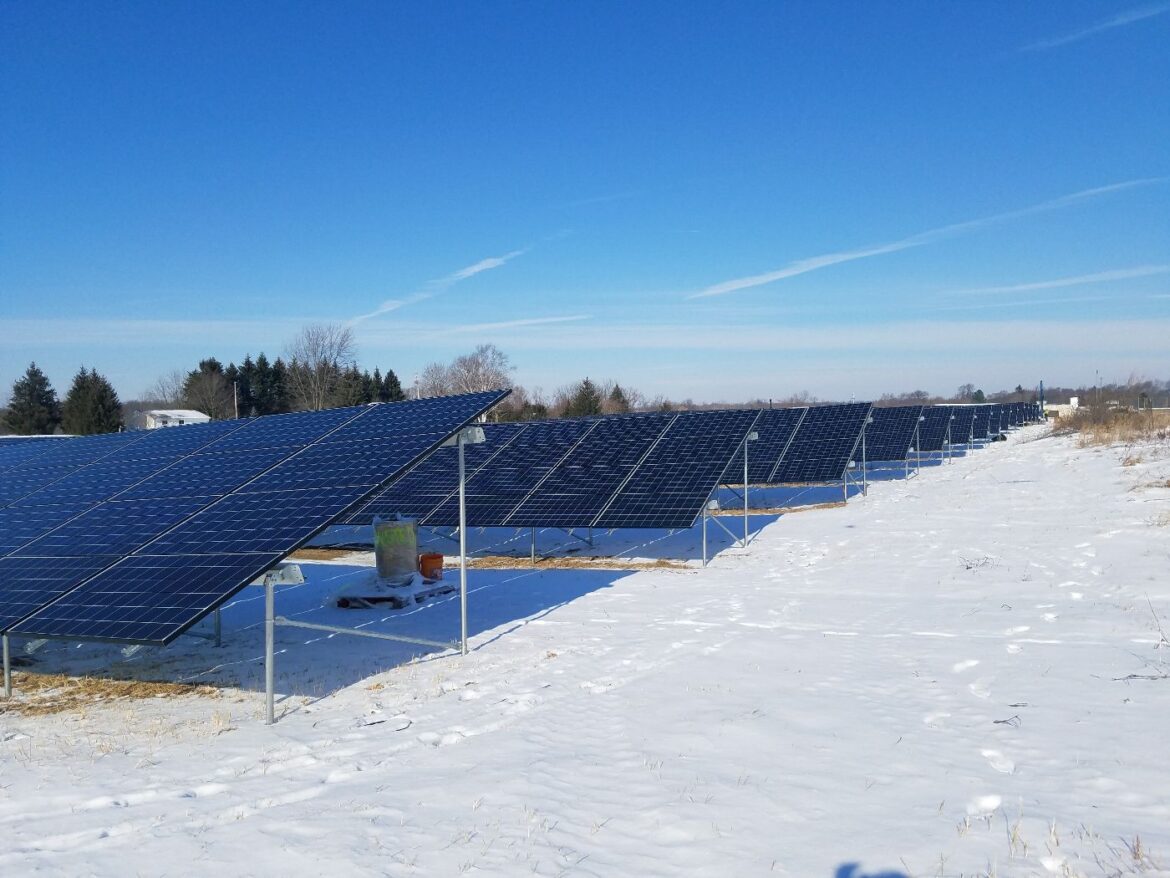
Onsted Community Schools’ on-the-ground solar panels span 5 acres near its athletic fields. Image: Onsted Community Schools
By Cameryn Cass
Capital News Service
The highest expense for schools behind faculty salaries is energy, prompting some districts in Michigan to eye solar savings.
“For a long time, schools have been looking at how to become more energy efficient,” said Scott Little, the associate executive director of the Michigan School Business Officials.
Schools replace broken industrial equipment with more efficient alternatives and have phased out fluorescent lighting, Little said.
A few Michigan schools already take advantage of solar energy, but most rely on energy from fossil fuels, said Ray Telman, the secretary and treasurer of the Michigan Schools Energy Cooperative, the organization spearheading a K-12 solar operation.
The goal is to provide solar opportunities to about 4,000 K-12 buildings around the state starting in spring 2022 with a program called Bringing Renewable Innovation to Education, or BRITE for short, Telman said. In August the cooperative, which will cover startup costs, began pitching BRITE to schools.
This program would reduce the cost of installation by about 25%, the amount available to for-profit businesses for such a project. Through BRITE, the cooperative would connect schools to for-profit installers to reap these benefits, Telman said.
Afterwards, the cooperative projects energy savings anywhere between 10% and 25% on the energy a school building uses. Schools would have to pay the remaining 75% installation fee.
“The savings are big enough to pay for construction,” Telman said.
Solar doesn’t work for all districts, Little said. Costs and savings depend on how buildings are used and existing infrastructure. You can’t put solar panels on an old roof, Little said.
Onsted Community Schools near Adrian already takes advantage of solar energy. On-the-ground panels installed in 2018 on five acres of unused land help power three main buildings and save the district a lot of money, said Steve Head, the school’s superintendent.
Over the course of 15 years, the district expects to save more than $3.2 million on energy and operational costs.
“It’s been really positive in our community,” Head said. “People have appreciated our good stewardship with that.”
On top of being an eco-friendly role model, Onsted has embedded renewable energy into its curriculum, as do schools nationwide.
“Integrating climate solutions in schools gives students firsthand opportunities to learn about sustainability,” said Laura Schifter, a senior fellow with the energy and environment plan at K12 Climate Action, a nationwide coalition of organizations promoting sustainability. “They become a part of their lived experience, and they are able to witness and understand the environmental, health, community, and economic benefits of advancing climate solutions.”
Although some schools might find it difficult to implement, BRITE is hoping to aid schools in cutting back on energy costs and relying less on brown energy.
“It’s a great opportunity for schools to get on and not feel like they have to be the lone ranger, that they can participate in a cooperative-type approach,” Little said.